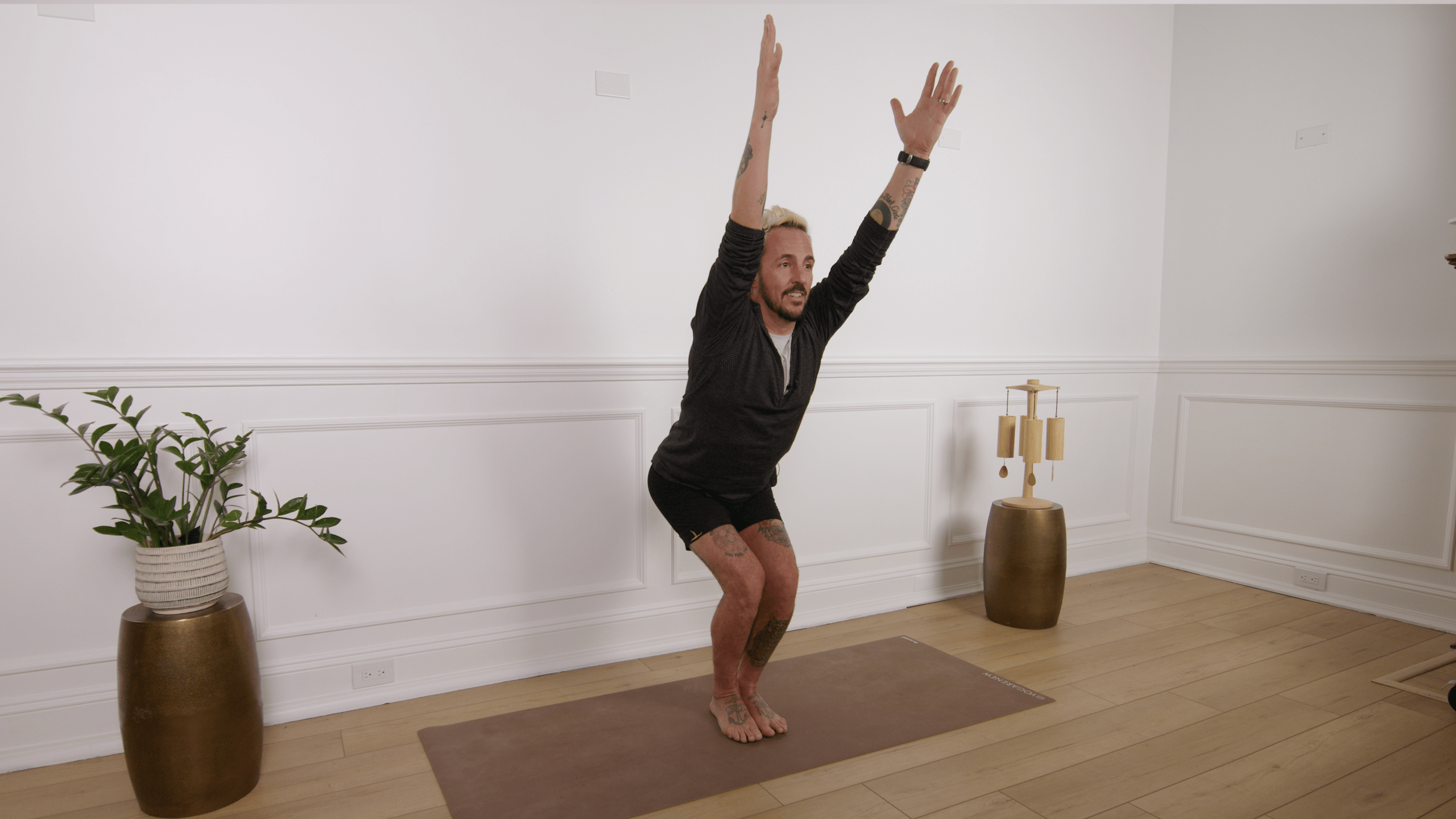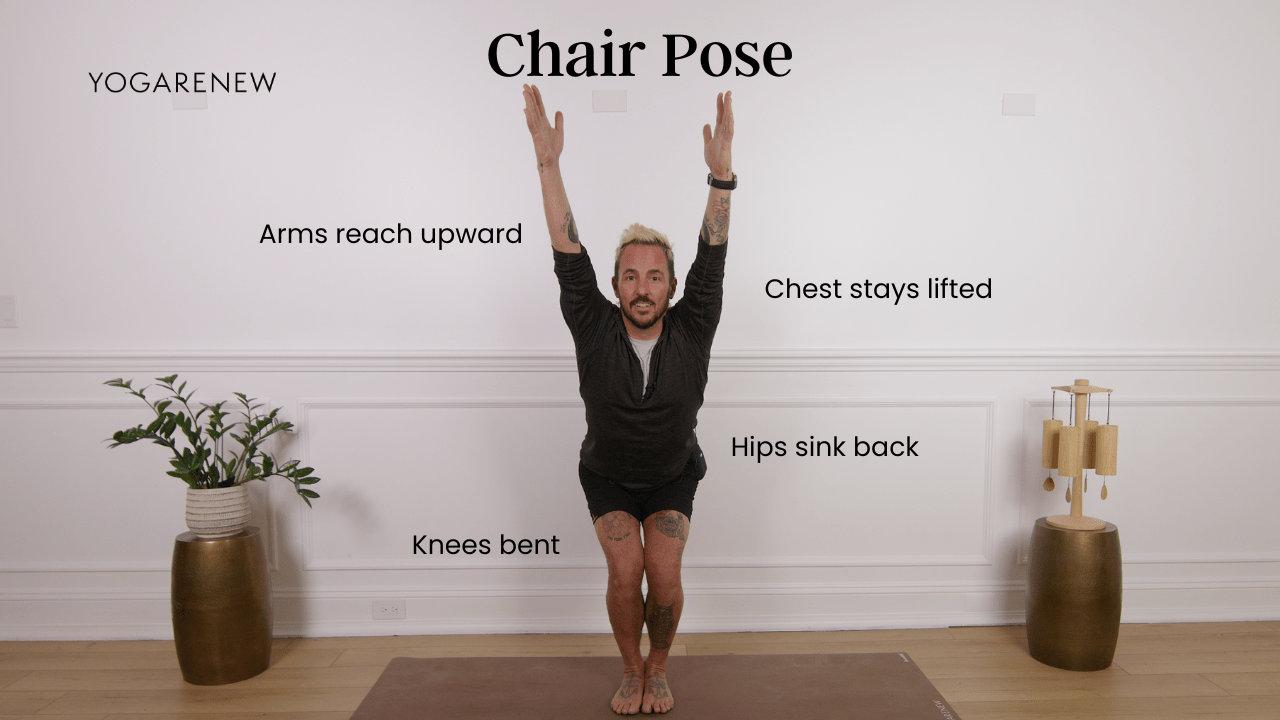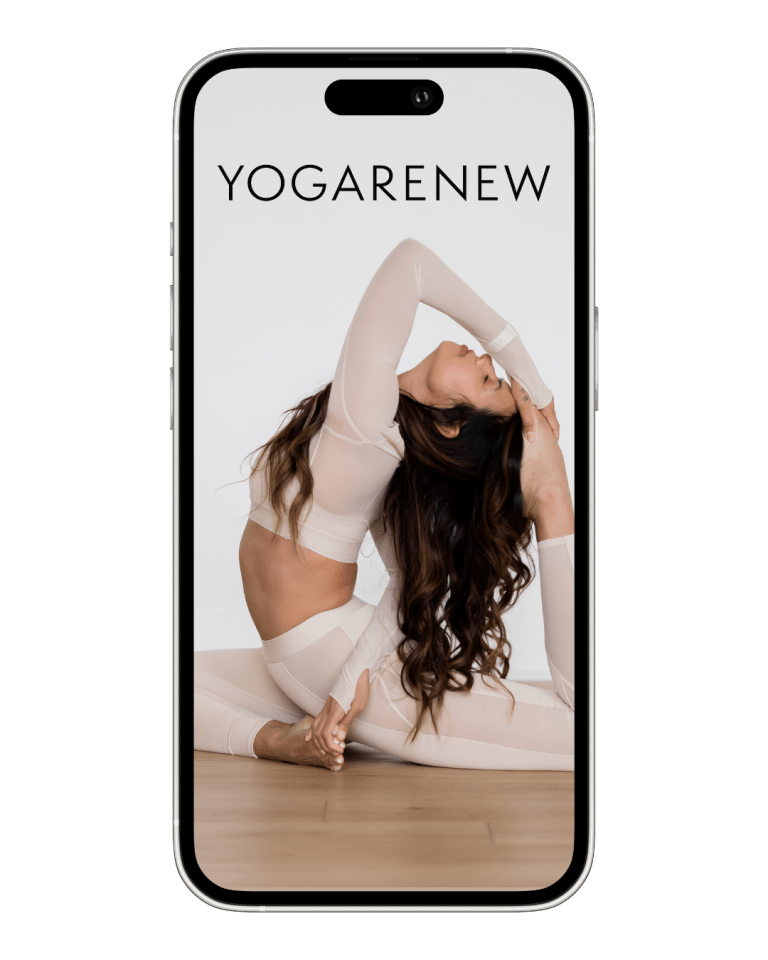Chair
Pose

Chair Pose, or Utkatasana, is a powerful standing posture that builds strength in the legs, core, and back while improving focus and stability. Often described as sitting in an invisible chair, this pose engages large muscle groups, ignites heat in the body, and builds endurance.
Utkatasana is a foundational pose in many yoga styles including Vinyasa, Hatha, and Power Yoga. While it challenges the body physically, it also cultivates mental resilience, concentration, and balance.
Benefits of Chair Pose
- Strengthens Lower Body: Activates quads, glutes, calves, and ankles
- Tones the Core: Engages abdominal muscles and supports spine
- Improves Posture: Builds awareness of spinal alignment and core stability
- Boosts Stamina: Develops muscular endurance and inner heat
- Improves Balance: Enhances coordination and proprioception
- Energizes the Body: Builds internal fire and focus
How to Practice Chair Pose
- Start standing in Tadasana (Mountain Pose), feet together or hip-width apart.
- Inhale and raise your arms overhead, palms facing each other or touching.
- Exhale and bend your knees, lowering your hips as if sitting into an invisible chair.
- Keep your chest lifted and spine long, drawing the lower belly in.
- Shift weight slightly into the heels, but keep toes light and grounded.
- Hold for 5–10 breaths, maintaining steady breath and gaze.
- To release, straighten your legs on an inhale and return to Tadasana.

Alignment Tips & Cues for Chair Pose

Alignment Tips:
- Keep knees tracking in line with the toes (don’t let them collapse inward).
- Avoid overarching the lower back—tuck the tailbone slightly and engage the core.
- Keep weight in the heels; you should be able to lift your toes.
- Keep arms active and aligned with the ears.
- Keep the chest broad and shoulders relaxed away from the ears.
Simple & Effective Cueing Suggestions:
- “Sit back like you’re lowering into a chair behind you.”
- “Weight in your heels, core strong, spine long.”
- “Lift through the heart, draw the ribs in.”
- “Reach up as you sink down.”
- “Breathe into your legs—try to stay steady.”
Contraindications
- Knee Injury or Pain: Modify depth or skip pose if aggravating.
- Low Back Issues: Focus on core engagement and alignment—avoid deep bend.
- Shoulder Limitations: Keep hands at heart center or open wide.
- Balance Issues: Practice near a wall or reduce depth of the squat.
- Pregnancy (especially second/third trimester): Modify stance and reduce intensity.
Modifications & Variations of Chair Pose
Modifications
- Hands at Heart Center: Reduce strain on shoulders and help focus on alignment.
- Wall Support: Practice with your back against a wall for extra support.
- Feet Hip-Width Apart: Helps with balance and hip comfort.
- Block Between Thighs: Encourages inner thigh engagement and alignment.
Variations
- Twisted Chair (Parivrtta Utkatasana): Add a prayer twist to challenge balance and detoxify.
- Chair Pose with Heels Lifted: Adds ankle strength and balance.
- Arm Variations: Eagle arms, cactus arms, or hands on hips.
- Chair Flow: Move dynamically in and out of Chair to build heat.
Common Mistakes to Avoid
- Knees Past Toes: Keep knees stacked above or slightly behind the ankles.
- Overarching the Low Back: Engage the core and slightly tuck the tailbone.
- Collapsed Chest: Keep the chest lifted and upper spine neutral.
- Holding the Breath: Stay steady and breathe deeply to maintain endurance.
- Weight Too Far Forward: Shift weight into the heels to protect knees.
When to Avoid or Modify Chair Pose
- Acute Knee or Back Pain: May aggravate symptoms—practice a supported variation.
- Low Blood Pressure: Rise slowly to avoid dizziness.
- Fatigue or Overexertion: Rest in Tadasana or practice a gentler pose.
- Pregnancy (especially late stages): Use a wall or wider stance to modify.
- Vertigo or Balance Issues: Use props or skip if stability is compromised.
Why Practice Chair Pose?
Chair Pose (Utkatasana) is a dynamic posture that builds strength in the legs, glutes, core, and shoulders while improving balance and posture. It engages large muscle groups, boosts endurance, and helps develop focus and mental resilience. By encouraging upright alignment and deep breathing, it supports spinal health and energizes the body. Often used as a transitional or foundational pose, Chair Pose prepares you for more advanced movements while helping you build heat, stability, and control on the mat.
Frequently Asked Questions
Can I do Chair Pose if I have knee pain?
Yes, but modify the depth of your bend and keep weight in your heels. Try practicing with a block between the thighs or near a wall.
Is Chair Pose good for beginners?
Absolutely. It’s foundational and can be modified to any level. Focus on alignment over depth to build safely.
What muscles does Chair Pose work?
Primarily the quadriceps, glutes, calves, and core. It also builds shoulder and arm endurance.
How long should I hold Chair Pose?
Start with 3–5 breaths. As strength builds, work up to 30 seconds or longer. Focus on quality over quantity.
What if I can’t raise my arms overhead?
Keep hands at heart center or on hips. You can still benefit from the lower body engagement.
Related Poses:

Free Classes, Tutorials & More
Download the YogaRenew App
Explore classes & pose tutorials for any style, format, duration or experience level with a free account in the YogaRenew app. Or subscribe and gain access to workshops, live classes and more.






